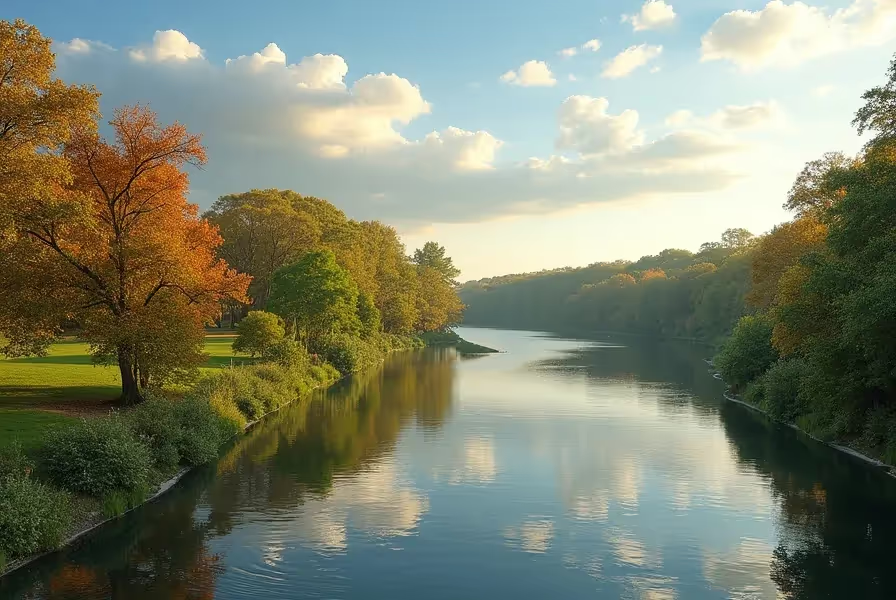The Presence and History of Wolves in Vermont
Many wildlife enthusiasts, hikers, and nature lovers wonder about wolves in Vermont. You may spot tracks or hear tales of wolf sightings. But do wild gray wolves still roam the Green Mountain State? This question leads to a fascinating story of wildlife, history, and conservation in Vermont and across the Northeastern United States.
Did Wolves Ever Live in Vermont?
Wolves were once a natural part of Vermont’s landscape. In the past, the Eastern Wolf (Canis lupus lycaon) and the Gray Wolf (Canis lupus) inhabited much of the Northeast, including all of Vermont. These apex predators helped shape the region’s forests and supported ecological balance.
By the late 1800s, European settlement and expansion changed everything. People hunted and trapped wolves due to livestock losses and fear. Laws were even passed that placed bounties on wolves statewide. With extensive deforestation and settlement, Vermont’s wolves disappeared by the mid-19th century.
Are There Wild Wolves in Vermont Today?
Currently, there is no official population of wild wolves in Vermont. State wildlife biologists and the Vermont Fish & Wildlife Department have found no evidence of established packs in modern times.
However, unconfirmed reports and occasional sightings surface from time to time. These isolated cases may involve:
- Large eastern coyotes (sometimes called coywolves)
- Wolves or wolf-dog hybrids escaping from captive facilities
- Transient individual wolves wandering in from Canada or the Great Lakes
Despite these stories, sustained wolf populations are not present in Vermont according to scientific studies and wolf tracking data. No dens, consistent howling, or pack behavior have been documented.
Coyotes and Coywolves: Vermont’s Closest Wolf Relatives
If you are eager to experience canine wildlife in Vermont, you are much more likely to encounter coyotes. Eastern coyotes are widespread, and they have an interesting history.
During the 20th century, as gray wolves vanished, western coyotes moved east. On their journey, they interbred with eastern wolves and domestic dogs. The result? A genetic mix now called coywolves—significantly larger and more powerful than typical western coyotes.
Key differences:
- Coyotes and coywolves are smaller than wolves
- They tend to avoid humans more
- Coat colors range from grayish to reddish, not the distinctive grays and whites of wolves
Wolf Sightings in Vermont: Fact or Myth?
Sometimes, people claim to have seen wolves or to have heard their haunting howls at night. While most of these sightings turn out to be mistaken identity, a handful do involve actual wolves that wandered south from Canada.
The most recent scientific data shows:
- A small number of verified wolf sightings in Maine, New Hampshire, and New York in the past two decades
- DNA-confirmed wolf in Vermont is exceedingly rare, with only a few isolated cases
- Most canine sightings are large coyotes, coywolves, or wolf-dog hybrids
Wildlife experts rely on DNA analysis, examining tracks, scat, and camera traps for proof. To date, these records do not indicate the presence of a sustained wolf population in Vermont.
Could Wolves Return to Vermont?
This is a popular question among conservationists and wildlife advocates. There is suitable habitat for wolves in Vermont’s Green Mountains and Northeast Kingdom. Wolves have returned to the Great Lakes states and parts of Canada close to Vermont’s border. Natural recolonization may eventually happen.
However, several challenges remain:
- Human land use and development
- Concerns over livestock predation
- Legal protections (state and federal endangered species law)
- Public perception and landowner cooperation
Some states and organizations discuss reintroduction programs. But at present, Vermont has no plans to reintroduce wolves to the state.
Eastern Wolf, Gray Wolf, and Coyote: What are the Differences?
If you want to know how to identify wolves versus similar wildlife, there are a few things to look for:
- Gray Wolf: 80 to 110 pounds, long legs, big paws, broad snout. Color varies from gray to white or black.
- Eastern Wolf: Slightly smaller than gray wolf. Rare, lives mainly in southeastern Canada.
- Coyote/Coywolf: 30 to 50 pounds. Narrow snout, pointed ears, bushy tail. Color is often reddish-gray.
Where Can You See Wolves Near Vermont?
If you hope to see wild wolves, your best chance is to visit regions where they have healthy populations. Options include:
- Northern Maine (very rare, but some recent confirmation)
- Quebec and Ontario, Canada (established packs in wild areas)
- Great Lakes region and western United States national parks
Some wildlife preserves and education centers in the Northeast also house wolves for rescue, research, and education purposes.
Frequently Asked Questions About Wolves in Vermont
Are there any wild wolves currently in Vermont?
There are no established, self-sustaining wolf packs in Vermont. Occasional unconfirmed sightings may be wandering individuals, escaped pets, or coywolves. All scientific evidence to date shows Vermont has no wild wolf populations.
Have wolves been reintroduced to Vermont?
No, there are no state-sanctioned wolf reintroduction programs in Vermont. The state monitors wildlife and conservation trends, but official reintroduction has not happened.
Do coywolves live in Vermont?
Yes. Eastern coyotes, also known as coywolves, are common in Vermont. They are hybrids with some wolf and dog ancestry and are larger than regular coyotes. They fill the ecological role that wolves once held in some ways but are not true wolves.
What should you do if you think you've seen a wolf in Vermont?
Report your sighting to the Vermont Fish & Wildlife Department or local authorities. They will want details like the location, size, behavior, and photos if available. Most sightings turn out to be coyotes or large dogs, but your report helps track wildlife.
Are wolves protected by law in Vermont?
Yes. Wolves are protected under federal and state endangered species laws in Vermont. Killing or harassing a wild wolf is illegal. This protection would apply if a wild wolf ever becomes present again in the state.
Why do people confuse coyotes for wolves?
Coywolves in Vermont can be larger than regular coyotes and have wolf-like colors or features. Under certain light or from a distance, it’s easy to mistake a big coyote or coywolf for a true wolf. Behavioral differences and close study are the best ways to tell them apart.











.svg)



